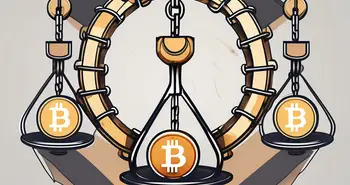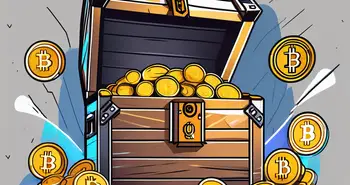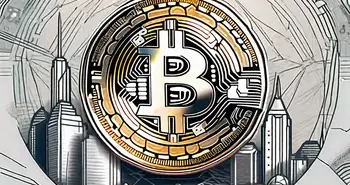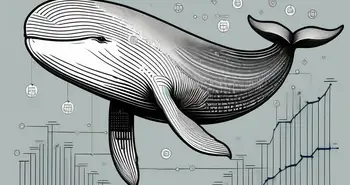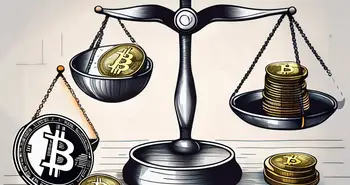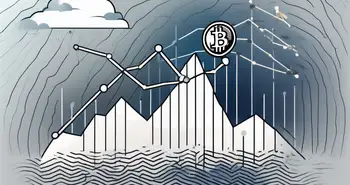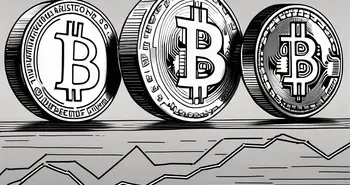Article Contents
How Does Cryptocurrency Value Increase
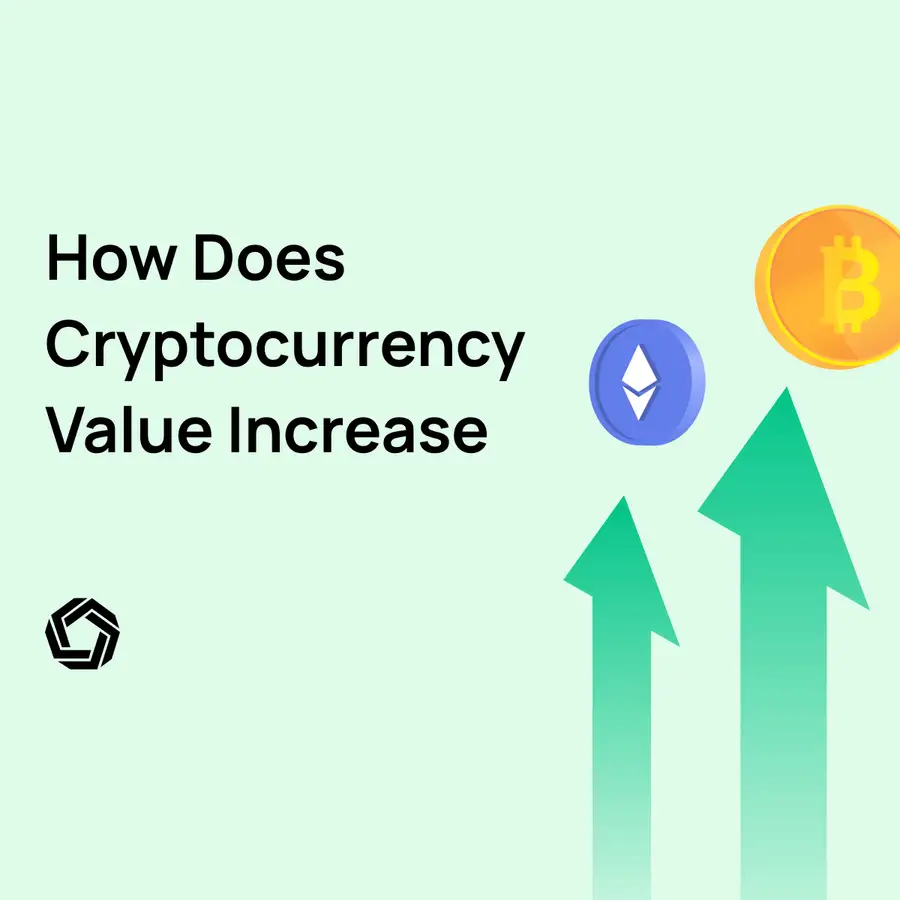
Cryptocurrency has now permeated the global consciousness. Today, it boasts an unprecedented number of users, with approximately 1000 times more individuals holding crypto wallets than those utilizing traditional Bloomberg terminals.
The rise of cryptocurrencies has disrupted the traditional norms of financial markets, revolutionizing how prices are conceived and perceived. Thanks to the advent of V-shaped depth charts on crypto exchanges, individuals have gained newfound insight into the birth and evolution of prices. This democratization of information has paved the way for a future in which everyone becomes an investor.
This monumental transfer of power reverberates far beyond the boundaries of Wall Street, New York, the Federal Reserve, and the U.S. dollar. It signifies a global shift, an epoch in which the world at large becomes an investor. As the tides turn, it becomes increasingly crucial to comprehend how prices are created and, more importantly, how cryptocurrencies gain value.
This article aims to shed light on the intricate mechanisms behind the increase in cryptocurrency value. By unraveling the underlying factors, we will explore the dynamics to demystify the rise of cryptocurrencies and uncover the reasons behind their escalating worth.
Prepare to be enlightened as we delve into the depths of this transformative era and uncover the driving forces behind the ever-increasing value of cryptocurrencies.
What Can Influence Cryptocurrency Value
Order Books As Price Discovery
V-shaped depth charts on crypto exchanges provide a visual representation of the order book, which is a vital component of price discovery in cryptocurrency markets. To understand how prices are created, it's essential to comprehend the functioning of an order book.
In a simplified explanation, an order book is a ledger that records all buy and sell orders for a particular cryptocurrency. It consists of two main components: the bid side (buy orders) and the ask side (sell orders). Each side lists the quantity of cryptocurrency desired or offered at various price levels.
The V-shaped depth chart visually represents the cumulative volume of buy and sell orders at different price levels. The depth chart's shape is determined by plotting the total quantity of buy orders against the price levels on the bid side and the total quantity of sell orders against the price levels on the ask side.
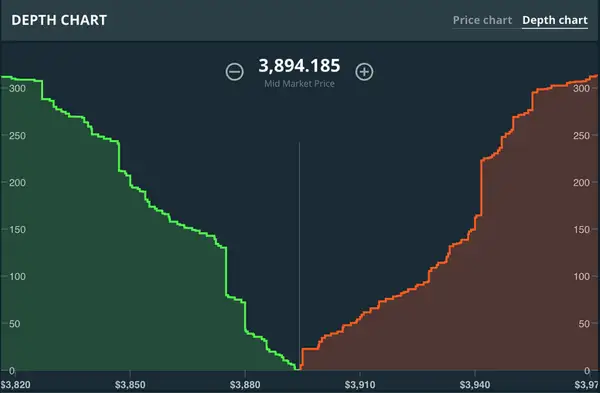
When a buyer places a market buy order or a limit buy order at a specific price level, it is matched with the existing sell orders on the ask side. The matching process occurs based on the principle of price-time priority. If the buyer's order matches a sell order, a trade takes place, and the price of the executed trade becomes the prevailing market price.
Conversely, when a seller places a market sell order or a limit sell order at a specific price level, it is matched with the existing buy orders on the bid side. Again, the matching process occurs based on price-time priority, leading to a trade and the establishment of the prevailing market price.
This continuous matching of buy and sell orders creates a dynamic environment where prices are always in flux. If there is a surge in demand, with many buyers wanting to acquire a particular cryptocurrency, the increased buying pressure can drive up prices. Conversely, if there is an influx of sellers looking to offload their holdings, it can lead to downward price pressure.
The subjective nature of prices in cryptocurrency markets is closely tied to the dynamics of supply and demand. Prices are not set by a centralized authority but rather emerge from the collective actions of buyers and sellers in the market. Each participant's perception of value, coupled with their individual needs and preferences, influences their willingness to buy or sell at a specific price point.

In conclusion, the creation of prices in cryptocurrency markets is an active and continuous process driven by the interaction between buyers and sellers. V-shaped depth charts and the order book provide transparency into this ongoing price discovery mechanism. The subjective nature of prices reflects the dynamic interplay of market participants' desires, needs, and sentiment, shaping the value of cryptocurrencies in real time.
Supply and Demand
In the fascinating world of financial markets, Benjamin Graham once likened the market to a voting machine. The reason behind this analogy? It's because, at any given moment, the price of a stock reflects what current buyers are willing to pay and what current sellers are willing to accept. It's a concept you may recall from your college economics class and holds true for any commodity. Simply put, the price is determined by the timeless interplay of supply and demand.
In crypto, the delicate dance between supply and demand profoundly influences their value. To grasp this interplay, let's look at one of the most renowned cryptocurrencies, Bitcoin, with its finite supply of 21 million coins.
Imagine, if you will, a scarce resource that is highly sought after by a growing number of individuals. As this resource's demand surges, so does its perceived value. It's akin to a situation where a rare and coveted item becomes increasingly desirable as more people vie to possess it.
Consider, for instance, a sparkling gemstone that has captivated collectors and connoisseurs' imaginations. As the gemstone's supply dwindles, its rarity amplifies, and more people yearn to adorn themselves with its resplendent beauty. The result? Prices soar to reflect the fervent desires of those eager to obtain this limited gem.
Conversely, when a resource's availability surpasses the demand level, a different narrative unfolds. Take a bountiful harvest of a certain fruit, for instance. When an abundance of this fruit floods the market, the relative surplus diminishes its perceived value. Sellers, seeking to entice buyers amidst the plentiful supply must lower prices to attract attention and facilitate transactions.
Applying this analogy to cryptocurrencies, the limited supply of coins, such as Bitcoin's fixed quantity of 21 million, enhances their scarcity. As more individuals recognize the potential of cryptocurrencies and desire to participate in this digital revolution, the demand for these limited assets intensifies. Consequently, the price of cryptocurrencies may rise, reflecting the willingness of buyers to pay a premium for a finite resource that holds immense value in their eyes.
This elegant interplay between supply and demand in the realm of cryptocurrencies illustrates the fundamental principles of market dynamics. The scarcity of a digital asset, combined with the ever-growing interest and demand from a global audience, can propel prices to new heights. Just as in the physical world, where the value of rare and coveted items rises, the world of cryptocurrencies operates on a similar premise, where scarcity fuels desire and sets the stage for fluctuating values.
Value Is Different At Different Times
When discussing value perception, extreme circumstances often serve as stark reminders of the relative nature of worth. Take, for instance, the contrast between normal times and times of war.
In times of peace and prosperity, luxury gems hold a special allure, captivating the attention of the affluent and becoming objects of desire. Individuals are willing to pay exorbitant prices to possess these exquisite jewels, appreciating them for their aesthetic beauty and status symbol.
However, the paradigm shifts dramatically when the world is engulfed in the chaos and scarcity of war. In such dire circumstances, the priorities of individuals change. The basic necessities of survival, such as food and shelter, become paramount. Once revered for their opulence, luxury gems might suddenly find themselves transformed into a means of barter, traded for sustenance rather than coveted for their intrinsic value.

This extreme example serves as a poignant reminder that value is inherently subjective and context-dependent. It is driven by individuals' pressing needs and circumstances at any given moment. When survival hangs in the balance, the allure of luxury fades into insignificance against the urgent requirements of sustenance.
Drawing a parallel to the realm of cryptocurrencies, this relative nature of value manifests in the ever-changing supply and demand landscape. As circumstances evolve and needs shift, the perceived value of cryptocurrencies can also fluctuate. The relentless interplay between buyers and sellers, driven by their individual needs and aspirations, shapes the value of these digital assets.
In essence, the concept of value remains fluid, adapting to the prevailing conditions and human needs. It serves as a humbling reminder that our perceptions of worth are not fixed but rather shaped by the dynamic interplay between our desires and the circumstances that surround us.
Market Adoption and Acceptance
The business model underlying blockchain technology may seem like magic. How can the cryptocurrencies fueling these networks hold value? How do they establish a defensible position? The answer lies within what Ali Yahya refers to as the Network Flywheel.
Traditionally, the defensibility of businesses has relied on privileged access to resources that confer advantages, such as new technologies, private user data, key partnerships, capital assets, distribution channels, or raw materials. However, blockchains possess a unique characteristic: they are open-source and permissionless. The code they are built upon is freely available for anyone to examine, and their functionality is accessible to anyone with an internet connection.
Here's the paradox: a correctly designed blockchain cannot benefit from exclusive resources. Its decentralized nature means that no small group of individuals holds unilateral control or disproportionate power over it. In essence, for a blockchain to truly be a blockchain, there can be no privileged actors.
Surprisingly, as a founder, you can give away every line of code that comprises your product, relinquish control over the movement you initiate, and still capture some of the value you create. The resolution lies in a well-designed blockchain's built-in incentive structure, which generates a multi-sided market with powerful network effects. Defensibility doesn't originate from the code itself but rather from the network it engenders.
How does this mechanism work? It all commences with the founding team, who set the flywheel in motion by articulating a new vision for a decentralized network.
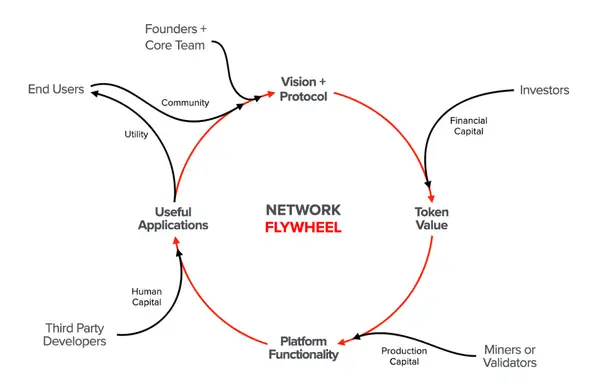
If the vision is sufficiently compelling, a community begins to form around it. The project transforms into a movement, and a core team of developers emerges to construct the protocol. Momentum may reach a point where the network's token acquires an initial monetary value, even if the protocol's development remains ongoing. This allows the community to attract external financial capital to aid their efforts.
The token's initial value serves another purpose. Once the protocol is complete, it incentivizes a distinct set of participants—miners (or validators in proof-of-stake networks). Miners and validators contribute computational resources, the production capital, to the network in exchange for protocol rewards. These resources grant the network functionality and security.
With a functional and secure network, third-party developers can leverage its capabilities to build useful applications on top of it. These applications generate real-world value for end-users, who, in turn, drive demand for the token. By becoming part of the community, users reinforce the vision at the protocol's core, completing the circle.
A larger community fosters increased demand for the token, creating stronger incentives for miners to support the network's functionality. This, in turn, encourages developers to build useful applications, further enhancing utility for users and strengthening the community.
The beauty of this process lies in its self-sufficiency. Once the flywheel gains enough momentum, the founding team can gradually step back. The protocol takes on a life of its own as it becomes fully decentralized.
If the network is well-designed, control and ownership will ultimately rest in the hands of the users, third-party developers, miners/validators, and investors comprising the protocol's community. This organic evolution marks the true power of blockchain networks, where crypto adoption and acceptance find fertile ground.
Market Speculation and Investor Sentiment
Market speculation and investor sentiment play a significant role in price creation, from news to rumors, to greed, as highlighted by Seth Klarman in his book “Margin of Safety.”
“Investors are sometimes their own worst enemies. When prices are generally rising, for example, greed leads investors to speculate, to make substantial, high-risk bets based upon optimistic predictions, and to focus on return while ignoring risk. At the other end of the emotional spectrum, when prices generally fall, fear of loss causes investors to focus solely on the possibility of continued price declines to exclude investment fundamentals.”
This behavior is particularly evident in the cryptocurrency market, exemplified by the famous Fear and Greed Index and the “when Moon, when Lambo?” trading culture. Cryptocurrency investors may exhibit even greater extremes in their emotional responses. As an example of this phenomenon, consider the surge in share prices leading up to the market crash of October 1987. William Ruane and Richard Cunniff of the Sequoia Fund, Inc. remarked on the illogicality of the price fluctuations:
“Disregarding for the moment whether the prevailing level of stock prices on January 1, 1987 was logical, we are certain that the value of American industry in the aggregate had not increased by 44% as of August 25. Similarly, it is highly unlikely that the value of American industry declined by 23% on a single day, October 19.”
Therefore, it is essential to keep these factors in mind when evaluating different metrics and to incorporate fundamental analysis when assessing the overall picture and value of cryptocurrencies, including metrics like market cap.
Fun Fact: Ironically, it is worth noting that Seth Klarman's book “Margin of Safety” has become a bidders item and is highly sought after by collectors. The book has reached prices of $5,000 or more in certain instances. This serves as a reminder that the perception of price and value can be subjective and influenced by factors beyond the intrinsic content or utility of an item.
The Value Growth of Bitcoin
Market Cap as an Indicator for Cryptocurrency Value
Even if one should always look at value from a broader perspective, market Cap is often the first metric people look at to grasp the size and popularity of a cryptocurrency project. It provides a straightforward and easily accessible measure of the cryptocurrency's value by considering its price and total supply. By comparing the market caps of different cryptocurrencies, investors, and enthusiasts can quickly assess the relative scale and standing of various projects in the market. As a widely used and easily understandable metric, Market Cap serves as a valuable starting point for evaluating the significance and traction of a cryptocurrency project.
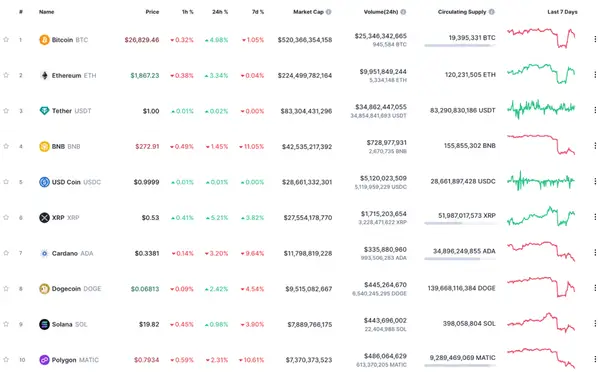
Assuming Bitcoin started with a market cap of $0 when it was relatively unknown. As more people became interested and willing to buy Bitcoin, the price per Bitcoin was $10.
If there were 100 Bitcoins in existence at that time, the market cap would be calculated as follows:
Market Cap = Price per Bitcoin x Total Bitcoins
Market Cap = $10 x 100 Bitcoins
Market Cap = $1,000
So, when each Bitcoin was valued at $10, and there were 100 Bitcoins, the market cap was $1,000.
As more people continued to enter the market and the price of Bitcoin fluctuated, the price per Bitcoin increased to $100. If the total number of Bitcoins in existence remained at 100, the new market cap would be calculated as follows:
Market Cap = $100 x 100 Bitcoins
Market Cap = $10,000
So, with a price of $100 per Bitcoin and 100 Bitcoins, the market cap would increase to $10,000.
This cycle continues as more people adopt Bitcoin, increasing demand and potentially driving the price higher. The market cap represents the total value of all the Bitcoins in circulation and serves as an indicator of Bitcoin's size and popularity within the cryptocurrency market. In the end, Bitcoins' maximum supply will be 21 million coins, so if the demand for Bitcoin increases, then the price will only go up from there, as the supply is fixed. Finally, this is displayed in the lists we know, like coinmarketcap above or fiatmarketcap where bitcoin is ranked against global fiat currencies.

What Determines the Bitcoin Price?
So as we already saw, much like any other asset, Bitcoin’s price is primarily determined by the interaction between its supply and demand. However, some argue that Bitcoin’s intrinsic value lies in its unique combination of scarcity, cryptographic properties, and philosophical ideals.
Bitcoin’s scarcity is a key driver of its value. With a hard cap of 21 million bitcoins, the supply is limited and cannot be increased beyond this predetermined amount. This starkly contrasts traditional fiat currencies that can be printed at will, leading to inflation and currency devaluation over time. Furthermore, Bitcoin’s cryptographic properties provide a level of trust and security unparalleled in traditional financial systems. The immutable nature of the blockchain, combined with the decentralized nature of Bitcoin’s network, creates an unbreakable chain of ownership and transaction history. Or, as Michael Saylor tweeted with the picture below:
“Bitcoin is a Truth Machine”

In addition, Bitcoin has come to embody a set of cultural and philosophical values, serving as the native money and meme of the internet that champions free speech, privacy, economic stability, and much more that might improve civilization.
This has attracted a growing number of individuals and institutions who seek to embrace these ideals and hedge against traditional financial systems that they view as corrupt, unstable, and pure slavery. This increasing demand and adoption has created a self-fulfilling value cycle as more individuals and institutions flock to Bitcoin, reinforcing its status as a legitimate asset class.
Conclusion
In conclusion, we have explored various factors that contribute to the increase in cryptocurrency value. We delved into underlying elements such as order books, supply, and demand dynamics, the value of underlying assets, and the broader market adoption and acceptance of crypto projects. We also discussed the impact of speculations on price, which may deviate from the pure intrinsic value.
Furthermore, we specifically examined the significance of Bitcoin and its market cap as a widely recognized indicator within the cryptocurrency space. While market cap provides a snapshot of a cryptocurrency's size and popularity, it is important to consider additional factors that can drive value for a cryptocurrency asset.
Ultimately, the key to identifying cryptocurrencies that are likely to increase in value lies in creating value itself. When a project delivers real-world utility, solves a problem, or offers innovative solutions, it generates a sense of value that attracts individuals who desire to acquire that value. By evaluating a cryptocurrency project's long-term viability and potential impact, investors can make more informed decisions about its growth prospects.

Disclaimer: All investments involve risk, and the past performance of a security, industry, sector, market, financial product, trading strategy, or individual’s trading does not guarantee future results or returns. Investors are fully responsible for any investment decisions they make. Such decisions should be based solely on an evaluation of their financial circumstances, investment objectives, risk tolerance, and liquidity needs. This post does not constitute investment advice.

Painless trading for everyone
Hundreds of markets all in one place - Apple, Bitcoin, Gold, Watches, NFTs, Sneakers and so much more.

Painless trading for everyone
Hundreds of markets all in one place - Apple, Bitcoin, Gold, Watches, NFTs, Sneakers and so much more.

